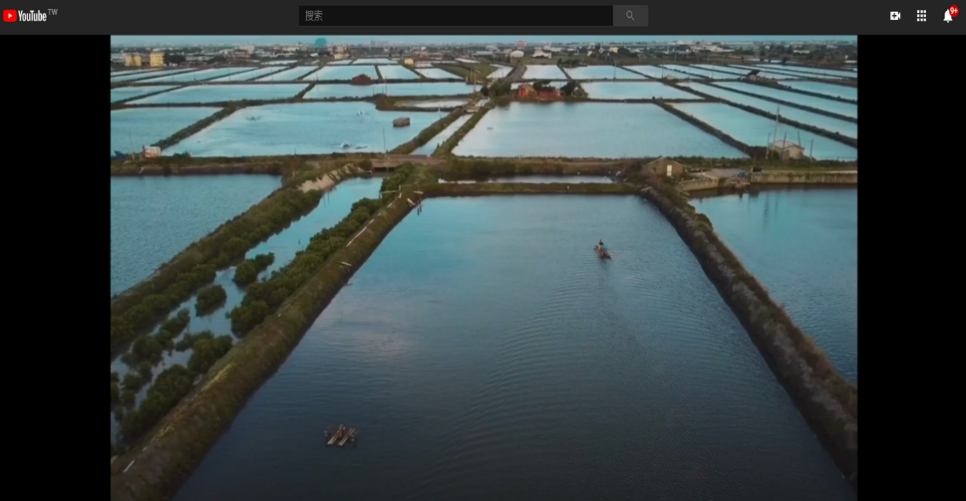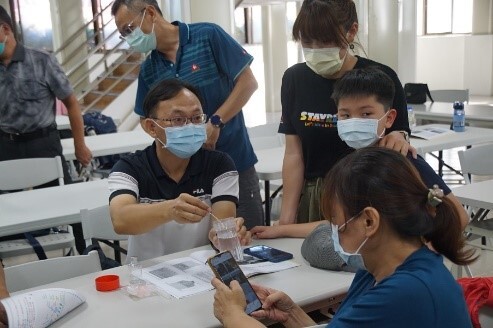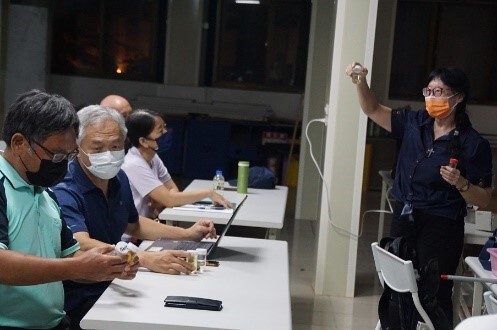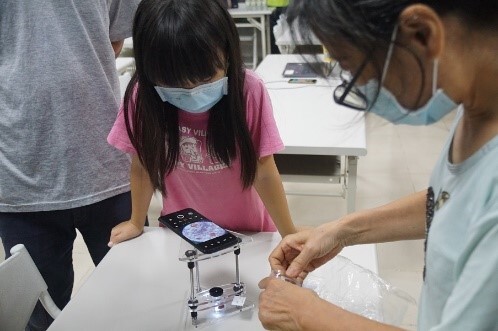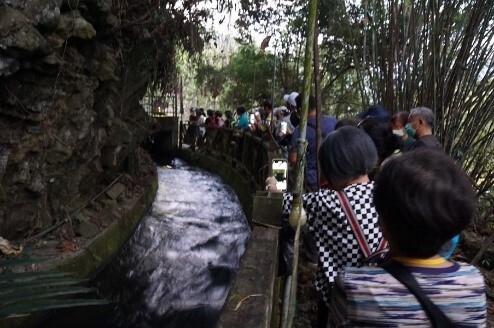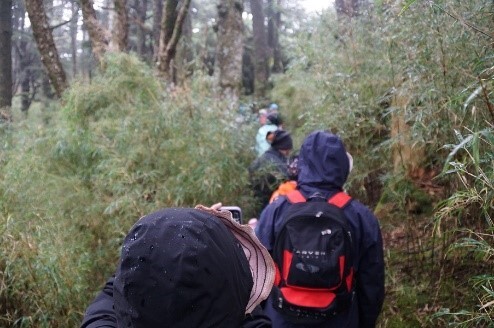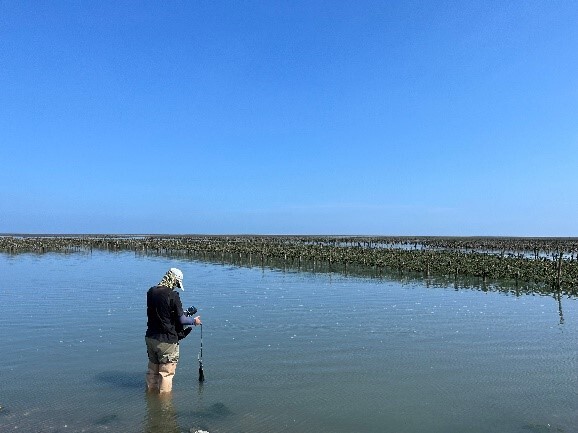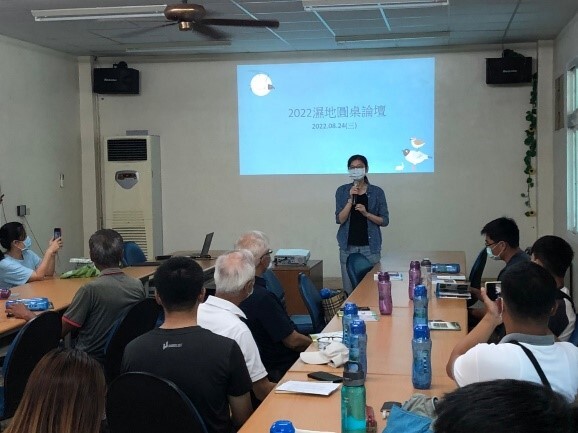SDG 14.5.4 Collaboration for shared aquatic ecosystems
NCUE has ongoing projects and activities, which include the “Fangyuan Reconstruction USR Seed Type Project” by the Environmental Education Centre, “2020-2022 In-Depth Cultivation of Fangyuan, Working Hand in Hand with Dacheng: Industrial and Environmental Sustainability Plan of the Two Townships of Changhua County Project.” The Science Education Center’s activities, and the Department of Geography’s “Monitoring of Agriculture’s and Fishery’s Social and Ecological Systems in the Coastal Wetlands of Western Taiwan”. Their brief descriptions follow.
1. Fangyuan Reconstruction USR Seed Type Project and 2020–2022 Sprouting programme for In-Depth Cultivation of Fangyuan, Working Hand in Hand with Dacheng: Industrial and Environmental Sustainability Plan of the Two Townships of Changhua County Project:
Included service plan: Maintenance is conducted twice a month. Members: 22 teachers and students at NCUE, with technical cooperation from the Fisheries Research Institute and Hungkuang University. They monitored and investigated 15 fish farms, four coastal water inlet channels, and groundwater wells of the Changhua County Aquaculture and Fisheries Development Association, providing real-time water quality and bacteria detection, monitoring, and analysis, and gave suggestions and improvement strategies to the mariculture farmers of Changhua to maintain the coastal water quality and the health of the aquatic ecosystem, and to ensure the production of safe aquatic food, related event photos as shown in Figure 1.
|
|
|
Figure 1. In-Depth Cultivation of Fangyuan, Working Hand in Hand with Dacheng: an USR micro film. Through planning, teaching, research, and service, teachers and students in NCUE connect with and promote eco-tourism, mariculture, regional development, and the conservation and maintenance of marine ecosystems among the local Fangyuan community |
Link to the FB page of the projects: https://www.facebook.com/NCUEUSR/photos/?t-ab=album&ref=page_internal.
2. Related Activities Organized by the Science Education Center:
The “Formosan Leaf-Nosed Bats of Baguashan and Bioluminescent Bacteria Outdoor Ecology Teacher Training” project, in collaboration with the Shipai Community Development Association in Changhua City, organized an ecological enhancement training event for teachers and ecological volunteers in Changhua. The activities took place on the Shipai Riverside Trail and included sessions on “Introduction to Baguashan Plateau Grey-Faced Buzzard and Water Quality Analysis”, “Nocturnal Animals and Bioluminescent Fungi in Shipai”, “Introduction to “Formosan Leaf-nosed Bats and Experiential Activities” and “Outdoor Nighttime Ecology Observation on the Shipai Riverside Trail”. The image above shows activities such as water quality testing on the Shipai Riverside Trail, an introduction to Formosan leaf-nosed bats, and hands-on experiences with nocturnal animals, related event photos as shown in Figure 2.
|
|
|
Figure 2. Status of activity experiences |
The “Ecological Enhancement Training for Teachers and Ecological Volunteers in Changhua” was jointly organized by Changhua City’s Shipai Community Development Association. The training consisted of five evening sessions on Wednesdays and took place in the Shipai Community. The activities included “Flora of Baguashan”, “Introduction to River Benthic Organisms”, “Frog Ecology and Survey Methods”, “Butterflies of Baguashan” and “Amorphophallus and Smartphone Microscopy Techniques”. The images above illustrate activities related to recognizing river benthic organisms, frog ecology and surveys, and Amorphophallus plants and smartphone microscopy techniques, related event photos as shown in Figure 3.
|
|
|
Figure 3. Workshops and experiments |
The “Ecological Enhancement Training for Teachers and Ecological Volunteers in Middle and High Altitude Ecology Outdoor Learning and Enrichment Activity - Lianhua Pond and Hehuanshan Ecological Park” and the Changhua Shipai Community Development Association co-organized the Ecological Enhancement Training for Teachers and Ecological Volunteers in Changhua. The activities at Lotus Lake and Hehuanshan included “Introduction to Glacial Relict Plants in Alpine Areas”, “Observation of Taiwan’s Extremely Rare Parasitic Plant, Mitrastemon kanehirai”, “Ecological Techniques of Nuomi Bridge and Experience with Formosan Leaf-Nosed Bats on Shenxian Island”, “Survey Methods and Ecological Introduction to Snails”, “Outdoor Ecological Teaching in Fir Forest Ecosystems” and “Outdoor Ecological Teaching in Yushania niitakayamensis Forest Ecosystems”. The images above show activities related to experiencing Formosan leaf-nosed bats on Shenxian Island, observing Taiwan’s extremely rare parasitic plant Mitrastemon kanehirai, at Lotus Lake, and outdoor ecological experiences in Hehuanshan’s fir forest ecosystem, related event photos as shown in Figure 4.
|
|
|
Figure 4. Outdoor experiences |
3. Monitoring of Agriculture’s and Fishery’s Social and Ecological Systems in the Coastal Wetlands of Western Taiwan:
The Department of Geography of NCUE undertook the National Science and Technology Council's “Monitoring of Agriculture’s and Fishery’s Social and Ecological Systems in the Coastal Wetlands of Western Taiwan (2/3)” project. The project is centered around Fangyuan and focuses on establishing a local research demonstration initiative for long-term, fundamental, and critical observations of core aspects of the socio-ecological system. As part of the long-term socio-ecological core observation, NCUE has set up the Changhua Station for observation. The environmental and ecological surveys at the Yongxing Wanggong Aquaculture Area’s canals involve monthly water quality monitoring. These surveys were conducted from February 2022 to July 2023, and we plan to continue these monitoring activities in the future. In-depth interviews with key local stakeholders are a vital component of the social research conducted at our observation station. These interviews help expand the platform’s local social network and involve representatives from various local stakeholders, including governing bodies, cultural organizations, industry groups, developers, producers, and others. Through these interviews, the project team collects systematic information about different roles, functions, and relationships of these stakeholders and their experiences and observations regarding the complex changes in the local society and ecology. This information forms the essential foundation of social-ecological data for the LTSER platform. Staff from the station actively participate in local events to discover relevant issues and collaborate with local communities. We aim to ensure that our long-term observational data can simultaneously address local needs, related event photos as shown in Figures 5-6.
|
|
|
Figure 5. Water quality observation at the observation station after the incident of algal bloom along the coast of Fangyuan |
|
|
|
Figure 6. Attending the Wetland Roundtable organized by Changhua Bird Watcher’s Association in Fangyuan |
Link for reference information: https://www.facebook.com/LTSER_Changhua-107002388661252/.

